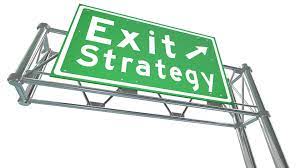Strategic planning will put you ahead of the competition because so many businesses struggle in these areas. In this post, we’ll define strategic planning for marketing, business, process, and planning workforce.
You might be shocked by the number of businesses that try to function without one, despite the fact that every firm ought to have a strategic plan (or at the very least, one that is clearly expressed). According to data from OnStrategy, 86% of executive teams talk about strategy for less than an hour each month, while 95% of the typical workforce needs to be made aware of the organization’s overarching strategy.
What Is Strategic Planning
Strategic planning is a process that business leaders use to set the goals and objectives of their company as well as their vision for the future. Setting the sequence in which these goals should be completed can assist the company in achieving its stated vision.
Strategic planning often covers mid- to long-term goals with a life span of three to five years; however, it can go longer. This is different from business planning, which usually focuses on short-term, tactical goals like how money is spent. A business strategy could span a time frame of several months to several years.
The result of strategic planning is a strategic plan. Usually, it can be found in a plan document or other materials. Staff members, customers, business partners, and investors can easily talk about, understand, and use these strategies.
Strategic planning is an ongoing process that companies use to think about how changes in the market, industry, law, and regulations will affect them. The plan can then be changed and updated to take into account any changes in strategy.
Strategic Planning Process
Simply expressed, the process used by businesses to develop plans for achieving broad, long-term objectives is known as the strategic planning process.
This method lets you figure out your goals, unlike strategy mapping, which helps you figure out your purpose, vision, and goals, and project planning, which is used to create projects and decide who is in charge of them.
The thorough strategic planning process helps make a road map for the strategic goals you should try to reach and the projects that would be least helpful to the organization.
Steps for Strategic Planning Process
Before you start planning your strategy, it’s important to look at key metrics that will help you and your company succeed.
#1. Decide on Your Tactical Posture.
This stage of preparation is when the groundwork is laid for all the following activities. Knowing where you are will help you decide where you need to go and how you will get there.
Early on, involve the right people while considering both internal and external sources. You can find out what the most important strategic issues are by talking to company management, using customer feedback, and getting information about the market and industry. You will gain client intelligence and a better understanding of your position in the market as a result.
#2. Prioritize Your Objectives.
Now that you understand your market position, it’s time to set goals and objectives to help you get there. Your objectives ought to be consistent with the organization’s mission and vision. Prioritize your objectives by asking important questions like:
- Which of these initiatives will have the most impact on achieving the mission and vision of our company and enhancing our standing within it?
- Which factors such as revenue versus customer acquisition are most important?
- What will the adversary do?
- Which tasks demand the most urgency?
- What steps must we take to accomplish our goals?
How will we assess our performance and determine whether our goals were achieved?
Objectives should be specific and measurable to help you accomplish the long-term strategic goals and actions outlined in Phase one.
#3. Develop a Plan.
To accomplish your goals, create a strategic plan right away. In this step, you set a schedule, decide on roles and responsibilities, and choose the strategies you’ll need to reach your goals.
#4. Execute and Supervise the Plan.
To introduce the plan to the organization, first share the necessary materials with them. The task itself then begins. Set up regular reviews with each contributor’s manager and milestones to ensure your progress.
#5. Review and Revise the Plan
The last part of the plan, review, and revision, gives you a chance to rethink your priorities and change your path based on what worked or didn’t work in the past.
Strategic Planning for Marketing
Strategic planning for marketing is the process of developing and carrying out a plan to achieve a certain marketing goal. it also boosts sales, earnings, brand awareness, and competition. Management and operations teams develop goals, define processes, assign roles, and track project success. They begin with a well-researched, practical plan in place, which they may later modify.
The 7 Steps in Strategic Planning For Marketing
You can use these 7 steps to create strategic planning for marketing:
#1. Choose Your Starting Place.
Start with a simple question like “What does our firm exist to do?” to ensure that everyone on the team understands the organization, its offerings, and its potential. Before discussing your past and future, discuss your niche market and company goal statement.
#2. Conduct Market Research
Before comparing your results to those of other businesses in the same market, go over your company’s objectives and the state of its operations. If your competitors are facing similar threats, you can learn how they communicate with customers. When planning how to launch a new product, it can be helpful to look at how similar products have been launched in the past.
#3. Define Your Target Demographic.
You might want to make a profile of your typical customers that lists their needs and problems. Give details about the person’s age range, where they live, how many family members they have, what they do for a living, how they spend their money, and anything else that could help you figure out who they are.
#4. Establish a Quantifiable Goal.
Whether you want to increase brand awareness, sales, customer interaction, or enter a new market, you need to set goals to see how well your marketing plan is working.
#5. Obtain Budget Approval Only.
Depending on the resources and processes your company uses, you might need to get budget approval after deciding on your marketing strategies instead of before. You can utilize the your data from the previous four processes to figure out how much money you will commit to the plan if you are aware that your budget will be tight.
#6. Choose a Strategy Combination.
With the help of your market research, you can decide which techniques to use to connect with your target market. When deciding on creating strategic planning for marketing, it may help to think about the four Ps of marketing, which are: product, price, promotion, and place.
#7. Establish a Detailed Schedule and Get Going.
Set deadlines for weekly, monthly, or yearly reviews as well as clear guidelines for each contributor to the plan.
It may be advantageous to provide team leaders who are capable of handling the complexities of the tasks assigned to their team members.
Strategic Workforce Planning
Strategic workforce planning lets HR figure out the talent needs of the organization’s future goals and make a plan to make sure the company has the best mix of talent, technologies, and employment models to meet these goals.
Making good strategic workforce planning begins with understanding the organization’s business strategy and objectives. HR leaders should work with business leaders to understand strategic workforce planning and goals. This will help them make a financial case for investing in a strategic personnel plan. Leaders of businesses are under a lot of pressure to meet immediate goals and focus on important staffing needs.
Strategic Planning for Business
The goal of strategic planning for business is to translate a business strategy into actionable things that can be carried out over time. Business strategic planning is often carried out over a period of three to five years. In order to fulfill a company’s vision and accomplish its long-term goals, strategic business planning also includes developing a business strategy and an associated business strategic plan. The primary goal of business strategic planning is to move a corporation from its current state to its desired state through a series of business actions.
What Are the 3 Types of Strategic Plan?
Business, corporate, and functional strategic plans are the three different types of strategic plan. They split into the following:
- Business: A business-centric strategic plan focuses on how the organization competes, producing competitive advantages and growth prospects. These strategies embrace a mission that involves assessing the external corporate environment, establishing goals, and allocating resources financial, human, and technological—to achieve those goals.
- Corporate: A corporate-centric plan specifies how the business operates. It focuses on structuring and coordinating the business’s operations, senior leadership, and policies and procedures in order to achieve set objectives.
- Functional: Function-centric and image-driven approaches often allowed for a fine-grained analysis of specific departments or segments, such as marketing, HR, finance, and development, to see how strategic plans fit into corporate-level strategies.
What Are Benefits of Strategic Planning?
The following are the top 5 benefits of strategic planning:
- It enables businesses to avoid being reactive and instead be proactive. Organizations can predict their future and make necessary preparations thanks to a strategic plan.
- It establishes a sense of direction. A strategic plan assists in defining the direction that an organization must go and in setting achievable objectives and goals that are consistent with the vision and mission that have been outlined for it.
- It improves operational effectiveness. A strategic plan offers management a road map for coordinating organizational functional activities to meet predetermined goals. It directs management deliberations and decision-making when assessing the amount of money and resources needed to achieve predetermined goals.
- It promotes market share growth and profitability. Businesses can gather vital data on customer trends, market changes, and products and services that could affect their performance with the use of a focused strategic plan.
- It can make a company more resilient. The idea of business is unstable. A company could be doing well one year and in debt the next. Businesses without a solid foundation, clear focus, and forward thinking will find it difficult to catch the next wave in an environment where markets and industries are continuously shifting.
What Are the Six Keys to Successful Strategic Planning?
The six keys to successful strategic planning are:
- Gather your team, schedule meetings, establish a calendar,
- Use Data, Not Assumptions, When Operating
- Make sure your mission, vision, and values are clear. Statements
- Focus on Transparency
- Overlook the Strategic Plan
- Action Is Important, Especially Leadership
Which Is the Most Important Thing in Strategic Planning?
The most important thing in strategic planning, and the key to determining the most crucial components of a strategic planning is to select goals and objectives that maximize your potential without taxing your resources or exposing you to unnecessary danger. This is the most crucial aspect of strategic planning.
Conclusion
More and more companies are using strategic planning to make and implement wise decisions. Even though it takes time, money, and effort to plan, a well-thought-out strategic plan helps the company grow, reach its goals, and keep its employees happy.
Related Article
- WHAT IS STRATEGIC MANAGEMENT? Importance, Process & Example
- STRATEGIC MARKETING PLAN: Steps to Strategic Marketing Plan
- WORKFORCE MANAGEMENT SOFTWARE: How It Works [+Top 10 Picks]
- Strategic Risk Management: Overview, Plans, Implementation (+ Free tips)






